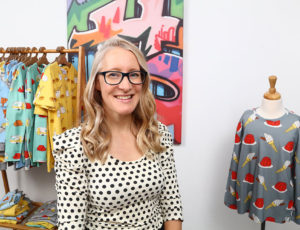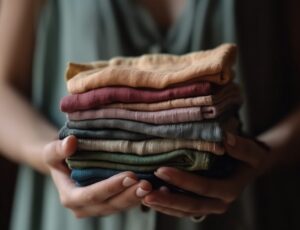
According to the latest research from Mintel, young Brits are buying, selling, mending, swapping and renting their clothes.
Findings show that in the last year alone, over half (52%) of those aged 25-34 bought second-hand clothes. This is in comparison to an average of 43%.
Young Brits are also turning their old clothes into cash; 50% of 25-34-year-olds sold unwanted clothes in the last year compared to 35% of consumers as a whole.
Furthermore, in the spirit of ‘make do and mend’, half of the 25-34-year-olds have repaired damaged or worn-out clothes.
‘Swishing’, the act of swapping clothes with friends or acquaintances, is also becoming on-trend; particularly amongst young people.
Three quarters (75%) of 16-24-year-olds say they have either swapped garments with others or have an interest in doing so in the future. This compares to an average of just 51% of Brits.
Generation Z (16-24-year-olds) is the demographic group most likely to use clothing rental services.
In fact, 54% say they have rented or have an interest in renting clothes in comparison to an average of 33% of Brits. Overall, 57% of Brits agree that buying too many fashion items is bad for the environment.
Commenting on the findings is Mintel retail analyst, Chana Baram. “The idea of ‘reusing, reducing and recycling’ has the potential to be a big disruptor in the fashion industry. Young shoppers seem to be emulating their grandparents who had to ‘make do and mend’ during World War II.
“As the climate crisis continues to gain headlines, consumers’ perspectives are shifting. It’s no longer enough for clothing to be priced well, or to reference the latest trends; fashion brands and retailers also have to think about working towards a goal of providing more sustainable options.
“Many young people today are likely to be influenced by the ‘Attenborough’ or ‘Greta’ effects and are becoming far more aware of the negative effects fast fashion can have on the environment.
“As a result, we have seen a real increase in the number of businesses and retailers offering repair services, second-hand items or rental options.”
Interest in sustainability
Following in the green footsteps of celebrity sustainable fashion advocates such as Emma Watson and Joaquin Phoenix, younger consumers are starting to shop more responsibly when it comes to clothing.
Research reveals 68% of 16-24-year-olds say they are trying to make more ethical clothing purchases now than they did in the last 12 months; this compares to an average of 57% of British shoppers.
Overall, 30% of consumers agree they would choose a clothing retailer based on whether or not they sold sustainable ranges.
However, 79% find it difficult to know which retailers are ethical. Price is also not perceived as an indicator of sustainability. Just 22% agree that the more you pay, the more likely it is to be ethical.
However, six in 10 (59%) Brits would be willing to pay more for sustainable clothing.
Whilst Brits have an interest in sustainable fashion, transparency is also essential.
Indeed, over two thirds (67%) of people agree that clothing retailers should inform customers when items are not made sustainably.
Baram continues: “Media coverage has helped to raise consumer awareness regarding how harmful certain shopping habits can be to the environment. Consumers want to see fashion retailers doing more to help them shop more ethically and sustainably.
“However, with so many conflicting messages regarding what is and what is not sustainable, many shoppers are finding it difficult to understand which retailers and brands are truly leading the way.
“It has become more necessary than ever for the fashion industry to work together; to push for industry-wide best-practice guidelines when it comes to producing fashion in a way that will have the lowest environmental impact.”













